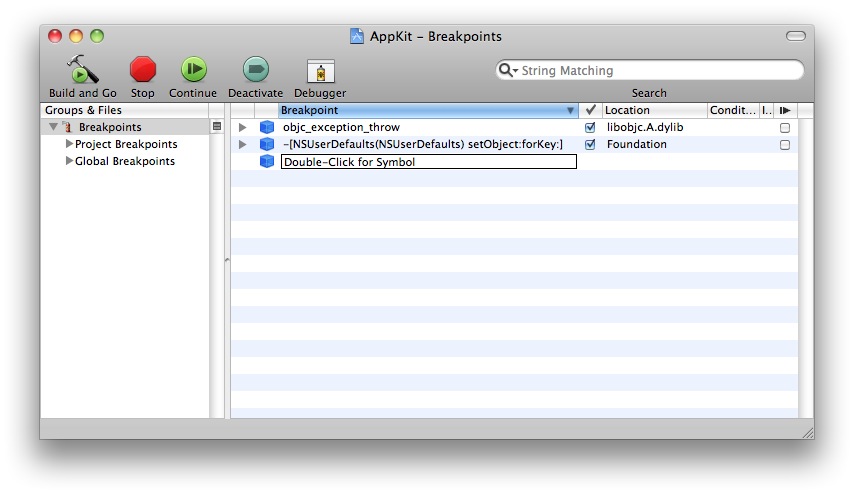

- #USER DEFAULTS SWIFT 3 UPDATE HOW TO#
- #USER DEFAULTS SWIFT 3 UPDATE UPDATE#
- #USER DEFAULTS SWIFT 3 UPDATE FREE#
UrlRequest.addValue("application/json", forHTTPHeaderField: "Accept")
#USER DEFAULTS SWIFT 3 UPDATE UPDATE#
UrlRequest.addValue(MY_API_KEY, forHTTPHeaderField: "X-Mashape-Key") If your app or plugins include Objective-C or Swift code that makes use of APIs newer than iOS 11, update this setting to the. Here’s an example of creating an Alamofire request using a URLRequest: When creating that request you can add headers. When creating Alamofire requests you can provide a URLRequest instead of passing in the URL as a string like we did above. update the wrappedValue get block to use a generic way to read from. Let sessionManager = Alamofire.SessionManager(configuration: configuration)Īs before, if you need to check the headers are being added correctly use debugPrint to check the request: UserDefaults & print out swift-senpai print(ername). In my case, if user change the language setting, I have to update 2 things at runtime. create a session manager with the configuration Let configuration = faultĬonfiguration.httpAdditionalHeaders = headers An example of when you might use it is for API version headers: This shouldn’t be used for authentication.

If you need to specify a header for all of the calls you make, then create a custom session configuration and add it there. H "Accept-Encoding: gzip q=1.0, compress q=0.5" \ Which will show you the equivalent curl statement: Let request = Alamofire.request("", headers: headers) To make sure your headers are being sent, you can use debugPrint to inspect the request: For the headers we need for Mashape there are better options that will avoid having to add the headers to each request. This way of including headers is useful when you only need to pass a header for a single call. HTTPHeaders is just a dictionary of strings: Here’s how we’d do that for our two headers: When creating a request, we can pass the headers as an argument. This tutorial has been written using Swift 3.0, Xcode 8.0, and Alamofire 4.0. You can see the documentation for the Urban Dictionary API in Mashape.
#USER DEFAULTS SWIFT 3 UPDATE FREE#
Sign up for a free account to get an API key to use wherever you see MY_API_KEY in this tutorial. Mashape has tons of free APIs that you can use play with to build your skills. Here’s a curl statement with those headers included: curl -get -include '' \ The custom headers we set up previously were an API key and JSON accept header for the Mashape API:
#USER DEFAULTS SWIFT 3 UPDATE HOW TO#
We’ll show how to handle both of those scenarios and the four different ways that headers can be included in Alamofire calls. When dealing with custom headers in Alamofire requests you might need to include a header for all of your API calls or just for a single call. Let’s figure out how to handle custom headers in Swift 3 and Alamofire 4. WaypointMapScreen(m圜oordinate: MKCoordinateRegion(center: CLLocationCoordinate2D(latitude: locationManager.lastLocation?.coordinate.latitude ? 0, longitude: locationManager.lastLocation?.coordinate.longitude ? 0), span: MKCoordinateSpan(latitudeDelta: 0.02, longitudeDelta: 0.02)), isAnimating: false, altitude: locationManager.lastLocation?.I previously wrote about adding custom headers to Alamofire 3 calls. Struct HomeView: View var title = "Add var locationManager = private var userSettings = private var selectedTab = 0 SwiftUI: Property wrapper that updates the view when the UserDefaults value changes. Is there a way to force a refresh of the UI to update the theme change without having to exit the app? Strongly typed: You declare the type and default value upfront. background(FillColor(myTheme: erTheme)) The FillColor is just a LinearGradient that is selected from the settings screen. But in the screenshot below, it doesn't update theme when it is changed in the settings screen. When you exit the app and restart it, the theme is updated. My ContenView is using a custom NavigationBar and custom TabBar so that I can change the colors to the users liking. The theme changes all elements of my app on all screens, except the main ContentView. I am doing everything in the viewDidLoad for this step so that I.

I am going to create two suites so that we can see later on how each suite has a different value for the same key.

These updates affect the Team Chat tab of the client settings, the channel. All we have to do is initialize UserDefaults with the suiteName that we want to use. Settings for controlling chat notifications are updated for clarity and ease of use. The theme chosen is saved in UserDefaults. Creating a new suite with UserDefaults is super simple. In my project, I have a settings screen that lets a user choose a different color them that is applied to different parts of the screen.


 0 kommentar(er)
0 kommentar(er)
